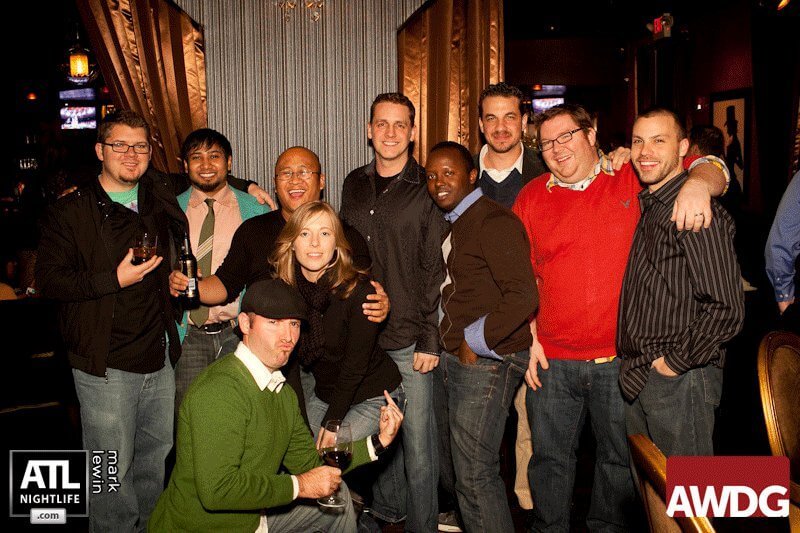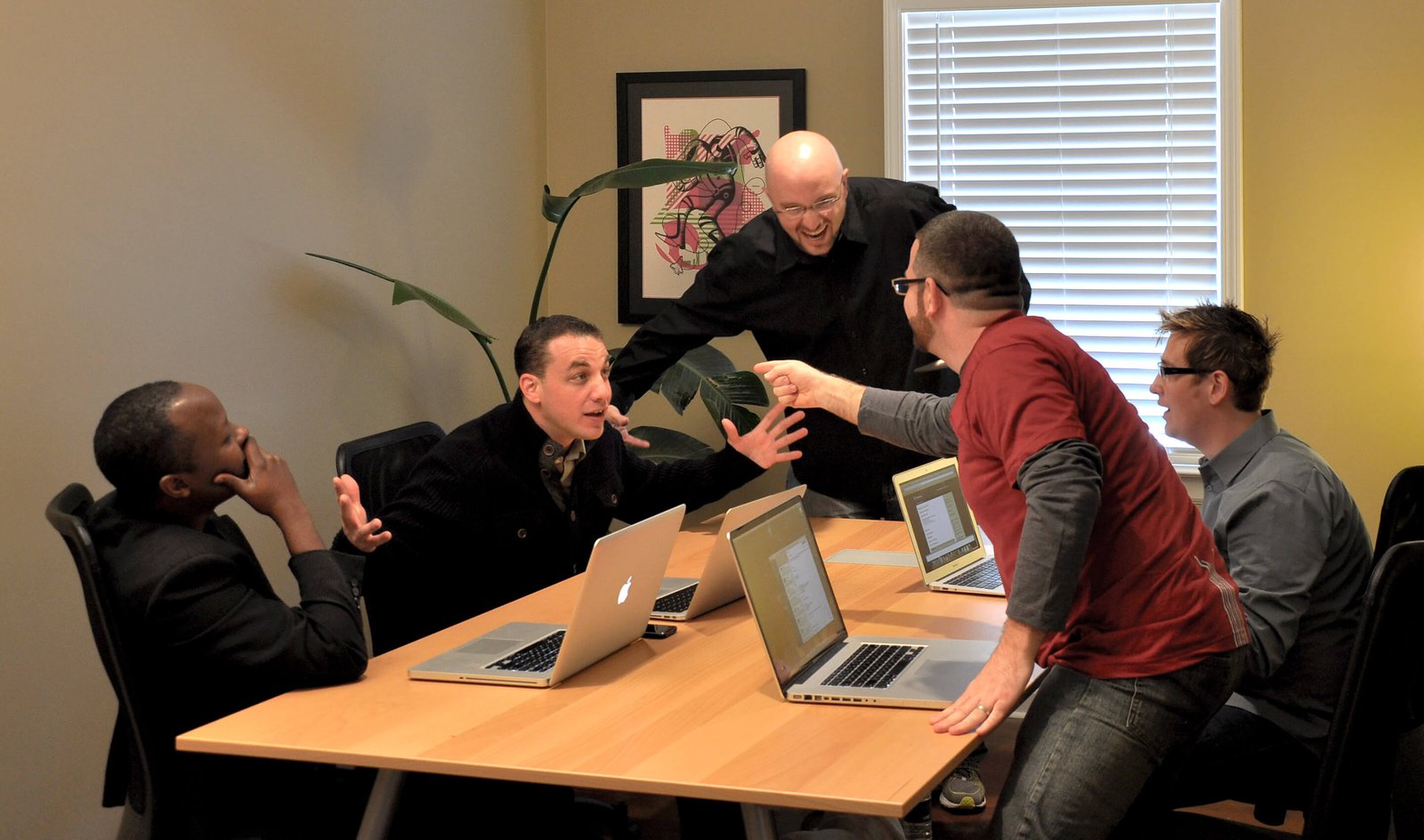It’s hard to believe, but last month marked 45royale’s 10 year anniversary. From humble beginnings we scraped, hustled, and worked our way to being named one of the top web design companies in Atlanta.
We’ve been featured in How Design, .net Magazine, and Smashing Magazine. We’ve opened offices, closed offices, and embraced remote working. We’ve nurtured and grown our client relationships and we wouldn’t be where we are now without their trust. And let’s not forget about the incredible friends we’ve made along the way in the Atlanta web design community. Along the dark and winding road, they helped us to keep perspective, patience, and perseverance.
But things weren’t always peachy. We’ve taken our fair share of lumps over the past decade and had to learn a lot of lessons the hard way.
That’s why we decided to write this article. We thought that if we shared our experiences, we might be able to help prevent some of you from making the same mistakes we made over the years.
It took us a long time get to where we are now. We still have a long way to go. But if you can take just one nugget of wisdom from our journey, it will have been worth it. So without further ado, let the lessons begin…
1. Stay creatively lean
Over the past couple of years we’ve seen our revenues decline. In fact, after talking to a few respected colleagues at other agencies, it appeared the industry as a whole was seeing a proverbial tightening of the belt. Many had been weighing their options and there were three paths that most of these agencies were considering:
- Close up shop and find jobs elsewhere
- Consider acquisition
- Get creative with finances
We explored an acquisition and started talking about what it would look like to fold 45royale in to another company. The offer was intriguing at first, but in the end it wasn’t the right fit for either company.

Matt’s amazingly organized desk
Instead, we decided to get creative. We switched up our invoicing methods. We reduced fees where we could. We worked with our accountant to reduce monthly financial pain points and deferred them to the end of the year.
We fought hard to keep 45royale alive. But it helped us realize that we can operate our business with much less than we thought. It’s easy in times of excess to become complacent about expenditures because things are going well. It took a lot of work to succeed and there is something in us that wants to be immediately rewarded for that effort. The wiser course however, is to reward yourself by remaining lean and stacking cash or re-investing in your own company. Doing so will help protect the work you’ve put in and help lessen the stress on your business when leaner times come. And they will come.
2. Strike while the iron’s hot
In 2009, we started talking to our pal Andrew Wilkinson over at MetaLab. Our conversations revolved around our respective businesses, agency headaches, and new products we were both working on. It was clear that our companies both had mutual admiration for each other and we wanted to find a way to work together.

It just so happened that around that time, Tumblr was starting to develop and market their Premium Theme store. With Andrew’s help, Tumblr invited us to become just the 2nd web design agency (MetaLab being the first) to design and build Premium Themes for them.
We joined forces with MetaLab to create a new theme company called Pixel Union. We would be unified in brand and tone, but MetaLab would keep the profits from their theme sales and we’d keep the profit from ours.
The first 6 months were incredible for us. We had a substantial amount of extra income coming through the door. But with the extra money came an unexpected problem—we didn’t have the means to support and grow our newfound theme business.
But with the extra money came an unexpected problem—we didn’t have the means to support and grow our newfound theme business.
Andrew, on the other hand, saw demand increasing and dedicated more people to designing and building themes. His sales skyrocketed and he decided to focus on moving design, development, and support resources out of MetaLab and pumping them into Pixel Union.
We weren’t able to focus and execute on the new business opportunity that fell into our lap because we were spread too thin. We had a lot of client obligations at the time and that ended up hurting us in the long run. Hindsight is 20/20. If we had been able to pivot and hire more resources to nurture that new line of business, we might be a different company today.
Bottom line—if you recognize a great opportunity, do everything you can to foster its growth. You never know if that window will open again.
3. Don’t let one client dominate your book of business

Here’s how it starts. You have a great client that values your work. You’ve built trust over the years and they’ve decided to give you a healthy retainer and the keys to their creative castle.
You’re on cloud nine. Things start off great. Hell, they might be great for a long time. But there will come one defining moment that will change the course of your relationship.
At first it’s not that noticeable. Then after a few months, they’re not coming to you for work as much. They’re keeping things from you. You’re not a part of their decision making process anymore. You’re no longer planning future projects. The relationship has become unrecognizable.
And then it happens.
They decide that they want to bring their design in-house. You’re left scrambling, trying to find new work to fill that massive void. It’s not easy.
Thankfully, after a few rough months, we landed on our feet. But not without learning a valuable lesson.
The key to sustaining a web design business is to keep a healthy and diverse book of clients at all times. When clients go away, and they will at some point, you need to be prepared. It may seem obvious, but you’ll probably find yourself with this problem at some point in your career.
One final tip: Spread your clients and book of business across several industries. If all your clients are in the housing industry and there’s another bubble burst, you’re likely to go down with the ship. Make sure you’re diversified and you’ll be able to weather any storm.
4. Retainers are not the enemy
We had a client once tell us something about retainers that stuck with us for a long time. He said, “someone always gets screwed when there’s a retainer in place”. And he’s right (to an extent). Either the client is spending money on hours that they never end up using or the contractor ends up giving way too much time to the client, and is effectively under-charging.
In the creative space, I think we can all agree that sometimes it’s hard to measure how much time something is going to take. You could have intentions of finishing a project in 20 hours, but an unexpected speed bump pushes the deadline.
In the creative space, I think we can all agree that sometimes it’s hard to measure how much time something is going to take.
It’s your job to explain to the client that retainers aren’t put in place because you know how much time something will take. They’re simply meant to reserve your calendar space. At that point, you’re both entering an agreement based on trust. The client is expecting to get your undivided attention based on terms you agree upon. You expect the client to pay you for that time in advance so you can feel comfortable in pushing away other potential projects.
Retainers should also be re-visited on a frequent basis. Make sure to structure your retainer contracts so that you are able to add hours on top of the arranged agreement.
If a client thinks they’ll need 20 hours of work a week from you and they consistently use 30 hours, you need to be able to make adjustments to the contract.
Retainers can help you out in many ways (including forecasting and spending). But don’t be afraid to charge what you’re worth and structure a fair retainer contract with your client.
5. Work on your own business
You’re great at delivering on a client’s goals and needs, but what about your own? It’s easy to get caught up with billable work and neglect your own business.
Make no mistake — it’s imperative to budget time, energy, and finances towards the health of your business.
Make no mistake — it’s imperative to budget time, energy, and finances towards the health of your business. That could mean setting a sales and marketing budget for the year. Maybe it’s making a time commitment to blogging or building up your newsletter list. It could be that you spend time on Treehouse honing your craft and creating better experiences on your web site.
I can hear you now. You’re saying, “who’s got the time for all that?”. Well, make time. It’s that simple. Whether it’s a daily commitment or just once a week, make sure that you’re putting in the time to improve your business. You’ll see incredible returns, we promise.
6. Foster and take part in the web design and development communities
Before 2009, we lived in a bit of a web design bubble. We had a ton of national and international clients, but something wasn’t right. Atlanta’s a big city, so there had to be people doing great design work. The only question was, where were they? We knew there was more out there for us and we decided to take action.
We went on meetup.com and the first thing we found was the Atlanta Web Design Group. We found an event and showed up.

The AWDG dream team
The people were friendly, warm, and inviting. We made a ton of friends through the community and have been given a lot of opportunity because of it. We’ve spoken at at events, traveled with colleagues, and picked leaders’ brains.
If we had it all to do over again, we would have gotten involved in this great community sooner. Don’t hesitate—find a group in your area and sign up!
7. Sometimes it’s OK to not know what you’re doing
Our first “real” client was a company named Flock. The now defunct web browser used the Gecko HTML rendering engine by Mozilla (nerd alert). It was the first browser to take social seriously and was definitely ahead of it’s time.
But when they came knocking on our door, we were green. We didn’t know that they had two incredibly talented people running the show. We didn’t know about venture-backed startups. We didn’t know that they had secured $30mm in funding.
We worked with them for 3-5 months and billed them $6,500. Total.
We were clueless. We didn’t know how insanely low our rates were. But it didn’t matter, we couldn’t have been happier.
We were clueless. We didn’t know how insanely low our rates were. But it didn’t matter, we couldn’t have been happier.
We worked extra hard and appreciated the opportunity. And from this relationship, we were part of an elite team that launched Tap Tap Revenge (the most popular App Store app of all time) in 2008 from SXSW in a hotel room.
You’re going to be wrong, especially when you first start something new. But as long as you reflect and improve upon your process moving forward, you’re going to be fine. Hard work always pays off and you’ll never regret going the extra mile for someone because it’s the right thing to do.
8. We spent a ton of money on unnecessary office space
Back in 2008, we had been working with Articulate for a couple years. Things were going well and we were thinking about getting office space. We had a great relationship with Adam Schwartz, Articulate’s founder and CEO, and we asked him about it.
After all, he had a successful and profitable remote team before remote teams were all the rage. We asked him if he thought we should plunk the money down for a swanky office. He answered without hesitation:
“If it’s a lifestyle choice, do it. Otherwise, don’t.”
Did we take his advice? No. Years later did we wise up and shut our office down? Yes.
We had a small office and still spent over $3,000 a month on rent, utilities, furniture, equipment, snacks… you name it. Not to mention, each of us were still spending our hard earned salaries on similar services at our homes.
We loved the idea of the office, but in reality, no one ever came by. We had more people wander in off the street asking what was going on than we did clients coming in for meetings. At the time, our client base was mostly national. Aside from having a kick-ass holiday party every year, the place never saw more than a few people at a time.
We had made an expensive lifestyle choice that boxed us in financially. It was fun while it lasted, but we’d think long and hard about Adam Schwartz’ advice if we ever found ourselves out office shopping again.
9. Track your time from the beginning
Tracking your time is important, but especially if you’re just starting out. You’ll be green (see anecdotes above) and you’ll have no idea how long something will take you at first.

However, over time you’ll have a nice sample size of time and projects. Because you know how much things cost (both in dollars and time), you’ll have the confidence to charge what you’re worth. And later on down the road you’ll be able to play with different pricing structures like hourly vs. value.
This applies to internal projects as well. By tracking time, you’ll see the time to dollar ratio, informing decisions about resources, scaling, and more.
10. Take time to reflect
The rat race is real when you own a small business. It’s easy to have blinders on when the tasks of the day seem overwhelming.
Taking time to reflect on your business monthly, quarterly, or even yearly will give you insight you might miss if your head’s down.
A good way to do this is to set a few goals and milestones that you can 1) keep at the forefront of your brain and 2) track and review easily. A few of the things we ask ourselves on a monthly basis are:
- Are we making the client journey clear and enjoyable?
- Are we serving our community and offering value?
- Are we participating in projects that matter to us?
- What can we do better to improve our company and culture?
Depending on where you are in your business or career, your reflections might look different. But if you take some time to put your business first on a regular basis, you’ll find a little more clarity and perspective when you need it.
Awesome, you’re still here!
If you’ve made it this far, congratulations! You’re the proud recipient of 10 lessons that we learned over the last decade here at 45royale. We hope you found it insightful and that it helps you down the line. If you have any questions or thoughts, please don’t hesitate to leave a comment below. Here’s to another 10 years of growth and learning!


